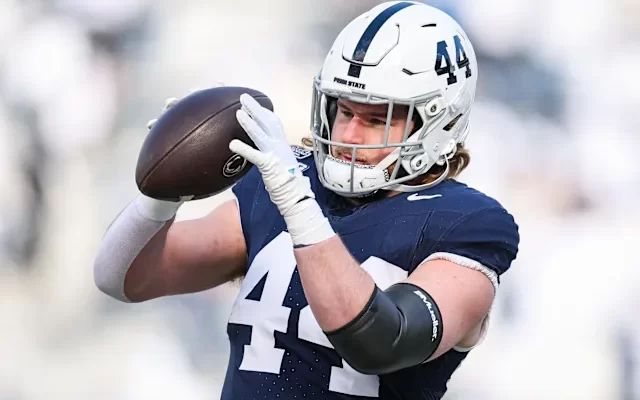Chicago Bears’ NFL Draft Struggles: Why Wasted Draft Capital Has Held Them Back and What It Means Moving Forward
The NFL Draft is often viewed as the lifeblood of any successful franchise. It is the primary means through which teams replenish talent, build for the future, and craft a competitive roster capable of sustained success. For the Chicago Bears, however, recent years have told a story of missed opportunities and underwhelming returns from their draft capital. As the league continues to evolve and the draft remains a critical avenue for team building, the Bears’ inability to fully capitalize on their selections has become a significant obstacle on their path to relevance and playoff contention.
Examining the Bears’ draft history over the past several seasons reveals a pattern of inconsistency and unmet expectations. Despite possessing valuable draft picks, including high selections and multiple opportunities in various rounds, the team has struggled to translate those assets into impactful players who can change the course of the franchise. This inefficiency in talent acquisition has slowed the Bears’ progress, forcing reliance on free agency and trades to fill gaps, often at a higher cost and with less guaranteed success.
One of the fundamental challenges the Bears have faced is scouting and evaluation. While no draft process is perfect, successful franchises typically excel at identifying talent that fits their scheme and culture. Chicago’s recent drafts suggest that either the evaluations have been flawed or the selections have not aligned well with the team’s needs. Players picked with high expectations have sometimes failed to develop as hoped, whether due to injuries, poor fit, or other factors. The missed potential of these draft picks has led to questions about the front office’s decision-making and the overall draft strategy employed.
Another aspect contributing to the underutilization of draft capital is the Bears’ approach to player development. Drafting a player is only the first step; nurturing that talent through coaching, conditioning, and opportunity is crucial. The team’s inability to consistently develop rookies into reliable starters and difference-makers has compounded the problem. Whether due to coaching turnover, inconsistent schemes, or lack of individualized attention, the Bears have not always created an environment where draft picks can flourish. This shortfall has stymied the team’s efforts to build continuity and depth through homegrown talent.
The ripple effects of wasted draft capital extend beyond just the individual players. When draft picks do not pan out, it limits the team’s flexibility and forces adjustments to roster building strategies. The Bears have found themselves scrambling to patch holes left by underperforming draft classes, often turning to free agency for immediate solutions. While this approach can yield short-term fixes, it rarely provides the long-term foundation needed for a contender. The lack of impactful draft returns has thus contributed to a cycle of mediocrity, where the team struggles to sustain success and build momentum.
Furthermore, the competitive nature of the NFL means that every team is striving to find diamonds in the rough during the draft. When rivals consistently draft well and develop their picks, they gain a crucial advantage. The Bears’ inability to match that level of success puts them at a disadvantage, especially within their own division where competition is fierce. This dynamic creates pressure on the organization to reevaluate their draft process and make the necessary changes to avoid falling further behind.
Despite these challenges, the NFL Draft remains a source of hope for the Bears and their fans. The draft provides a unique opportunity to acquire young talent with high ceilings and relatively low cost. Recognizing the past missteps, the Bears’ front office has signaled a renewed commitment to improving their draft strategy and player development programs. This includes investing in scouting departments, analytics, and coaching continuity to create a more cohesive and effective approach to talent acquisition.
The 2025 NFL Draft and beyond will be critical tests of this renewed focus. The Bears have the draft capital to make meaningful moves and reshape their roster if they can identify and develop players who fit their vision. Success will depend not only on making the right selections but also on fostering an organizational culture that supports player growth and maximizes potential. This holistic approach is essential if Chicago hopes to turn their draft fortunes around and build a sustainable winning team.
In addition to the internal adjustments, the Bears must also adapt to the evolving landscape of the NFL Draft itself. The increasing role of data analytics, combined with advanced scouting technologies and more sophisticated player evaluations, demands that teams stay ahead of trends. The Bears’ ability to embrace these innovations could differentiate them from competitors and enhance their draft outcomes. Staying nimble and open to new methodologies will be crucial as the league continues to grow more competitive.
Another consideration is the balance between drafting for immediate needs and long-term potential. The Bears’ past drafts suggest that sometimes they have struggled to strike this balance, either reaching for players too early or waiting too long to address key areas. Going forward, a clear and disciplined draft philosophy will be vital to ensuring that each pick serves a purpose aligned with the team’s overall strategy. This requires coordination between the front office, coaching staff, and scouting department to maintain focus and consistency.
The pressure to make the most of their draft capital is not just organizational but also felt acutely by the fans. Bears supporters, known for their loyalty and passion, crave progress and tangible results. Each draft brings a new wave of optimism, but repeated disappointments have tempered expectations. Rebuilding trust with the fan base through successful draft picks can energize the franchise, increase engagement, and foster a positive environment around the team. The 2025 draft represents not only a chance to improve the roster but also to renew the relationship between the Bears and their community.
Ultimately, the Chicago Bears’ recent struggles to leverage their draft capital fully serve as a cautionary tale of how critical drafting is to NFL success. It highlights the need for comprehensive, disciplined, and forward-thinking approaches to talent acquisition and development. The organization stands at a crossroads where meaningful change can lead to resurgence or continued challenges. The decisions made in the draft room and the subsequent nurturing of those players will play a defining role in shaping the Bears’ future.
For the Bears to emerge as contenders once again, the lessons of past drafts must be heeded. A commitment to thorough scouting, smart selections, patient development, and embracing modern tools will pave the way for better outcomes. The franchise’s rich history demands nothing less than a full commitment to excellence in the draft, as it remains the cornerstone of building championship-caliber teams. Chicago’s draft story is far from over, and with the right approach, the Bears can turn this critical aspect of their operation into a strength rather than a weakness.
As the 2025 NFL Draft approaches, all eyes will be on the Bears’ front office and scouting personnel to see if they can break free from the cycle of missed opportunities. The pressure to deliver quality picks that translate into on-field success is immense, but so is the potential reward. A few smart picks, combined with effective development, could change the trajectory of the franchise and energize a fan base eager for a return to glory. The draft is the most democratic and influential event in the NFL calendar, and for the Bears, it holds the promise of redemption and renewed hope.
In the end, the Bears’ NFL Draft analysis is a reflection of broader organizational challenges and aspirations. It underscores the importance of every pick, every evaluation, and every coaching decision in the grand scheme of building a winning team. The draft is not just an event but a continuous process that requires vision, discipline, and adaptability. The Bears are learning this lesson the hard way but have the opportunity to write a new chapter—one where draft capital is a tool for sustained success rather than a source of frustration.



